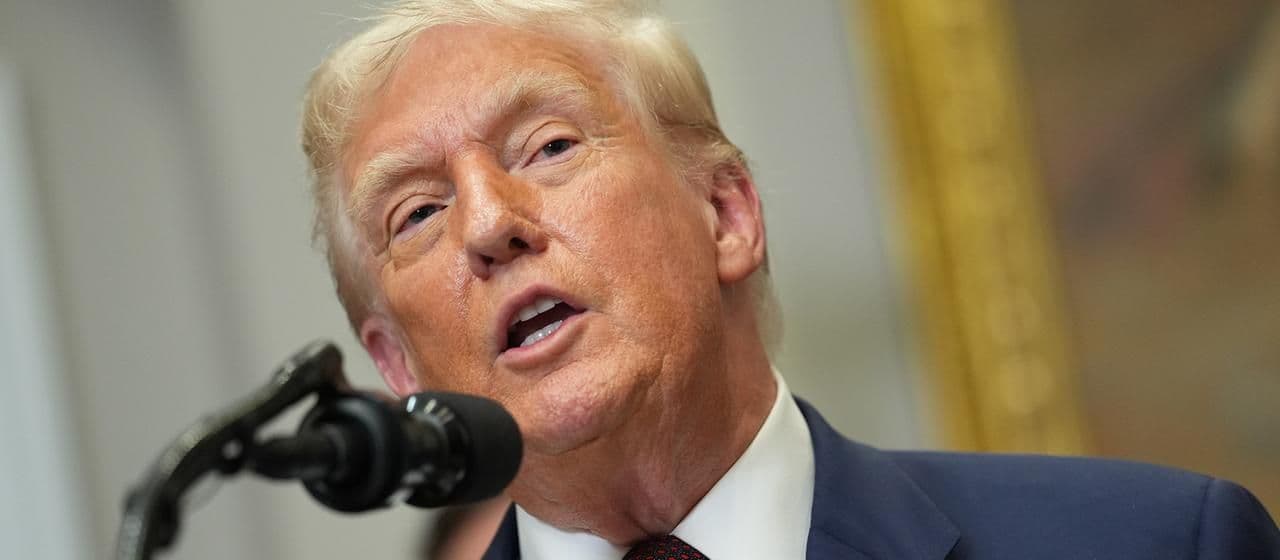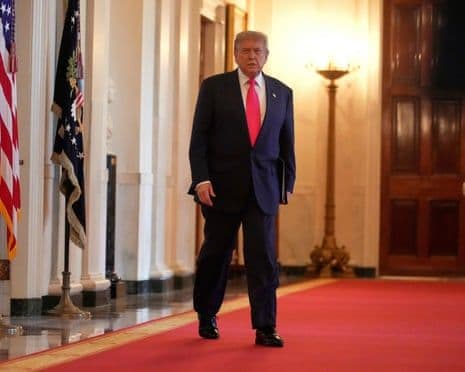Calling the Bluff: Trump's Billions Demand and the EU's Unfolding Trade Dilemma
Explore the fragile EU-Trump trade deal. Can Europe deliver on billions in energy promises? Uncover the high stakes, looming threats, and future of transatlantic tariffs.
The Ambiguous Energy Accord
A significant trade agreement has emerged between the and , designed primarily to avert escalating tariffs. Central to this 'grand bargain' is the EU's pledge to import a staggering $750 billion worth of US energy, including liquefied natural gas (LNG), oil, and nuclear fuels, by the close of Trump's current term – an average of $250 billion annually over the next three years. Despite these immense figures, the precise details of the agreement remain strikingly opaque. German Finance Minister openly expressed his "question marks" regarding the specifics, noting the absence of a signed, binding deal. Critical questions persist: Who will finance these massive imports? And perhaps more importantly, how will such a colossal undertaking be practically implemented? With the EU's current annual US energy imports hovering around $100 billion, closing a $150 billion yearly gap presents an enormous logistical and financial challenge. There’s a strong suspicion that these ambitious targets were less about rigorous economic planning and more about securing a political victory for Trump, deferring the true complexities until after his term ends.
Europe's Shifting Energy Landscape
This transatlantic energy commitment is set against Europe's ongoing strategic efforts to diversify away from energy sources. Yet, the sheer scale of the EU’s pledge to the US significantly surpasses the volumes it is currently phasing out from Russia. While Russian LNG still accounted for 15% of the EU's imports early this year, and the bloc imported roughly €22 billion in Russian fossil fuels in 2024, replacing these with US LNG would only cover a fraction of the promised increase. Moreover, the EU's own energy transition plans do not anticipate a complete cessation of Russian gas imports until 2028. This leads to a crucial, unresolved question: Who is actually responsible for purchasing this substantial volume of American energy? German Vice Chancellor Klingbeil admitted uncertainty about whether these are private investments or state mandates, pointing to a vague understanding between Trump and . The maintains its role is limited to facilitating buyer-seller connections, emphasizing that commercial decisions rest with private companies. However, meeting the politically charged quotas may necessitate the Commission subtly pressuring European energy importers, potentially at the expense of market-driven pricing.
Trump's Deal-Making Imperative
, known for his uncompromising negotiation style and aversion to being 'bluffed,' has made his expectations for the EU unequivocally clear: the $750 billion energy deal must be honored in its entirety. His stance is a direct ultimatum – fulfill the commitment, or face the re-imposition of crippling tariffs. This is not a mere suggestion but a demand, leveraging the immediate need of European businesses to escape tariff-induced uncertainty. Trump's 'Art of the Deal' philosophy is evident here, prioritizing a clear, transactional outcome over the intricate market dynamics or corporate autonomy that the often cites. While the Commission can facilitate, the onus of purchasing the additional $150 billion in US energy annually ultimately falls upon private European companies. Should these companies, guided by commercial logic, fail to meet these politically determined quotas, a significant confrontation looms. Trump’s 'no bluff' declaration serves as a potent warning: failure to deliver on the energy promise could rapidly reignite the transatlantic trade war, returning European businesses to the very precarious position they sought to avoid.
Future Uncertainties and Geopolitical Stakes
The true measure of this transatlantic energy agreement, and indeed the broader trade relationship, will only become apparent at the conclusion of 's current term. This deferred accountability raises profound questions about the long-term sustainability and strategic depth of a deal seemingly driven by immediate political expediency. Was the $750 billion figure genuinely derived from economic models, or was it a grand, symbolic gesture intended primarily to bolster Trump’s image after a tariff confrontation? German Finance Minister 's persistent "question marks" highlight the deep-seated ambiguities surrounding the agreement’s implementation, particularly regarding who bears the costs and who makes the purchases. What will transpire if, by 2025, the EU falls short of its ambitious import targets? And crucially, how will trade policy evolve under a potentially different administration? The possibility of a shift away from the protectionist stance that spawned this deal adds another layer of complexity. Beyond energy, other elements, such as the prospect of tariff-free US auto imports into the EU, also remain unresolved. This current 'deal' appears to have merely postponed, rather than fundamentally settled, core tensions, leaving the future of transatlantic trade balanced precariously on vague terms and uncertain political timelines.
Related Articles

Beyond the Numbers: Unraveling the True Impact of Trump's Global Tariff Gambit

Beyond the Numbers: Unraveling the True Impact of Trump's Global Tariff Gambit

The Unfolding Trade Chessboard: Trump's Tariffs and the Global Response

The Unfolding Trade Chessboard: Trump's Tariffs and the Global Response

The Unpredictable Toll: Unpacking Trump's Differentiated Tariffs on Global Partners

The Unpredictable Toll: Unpacking Trump's Differentiated Tariffs on Global Partners

The Reciprocal Ripple: Unraveling Trump's Trade Gambit on the Global Stage
